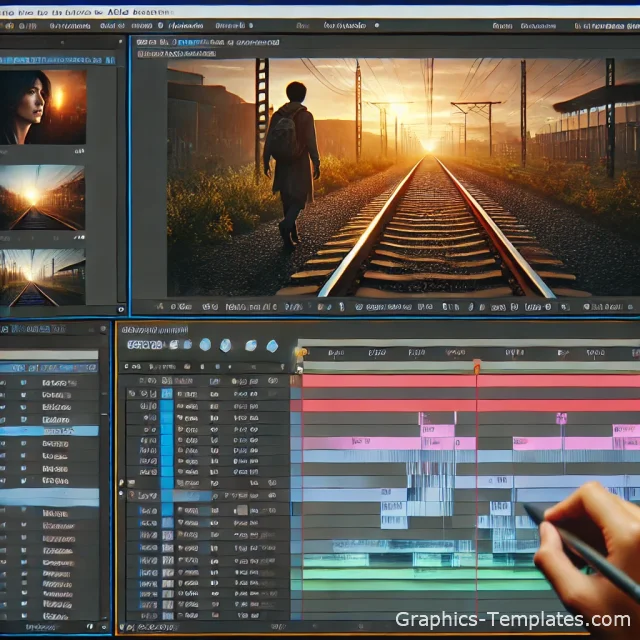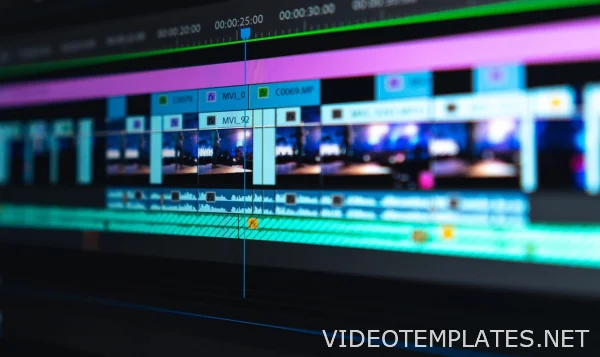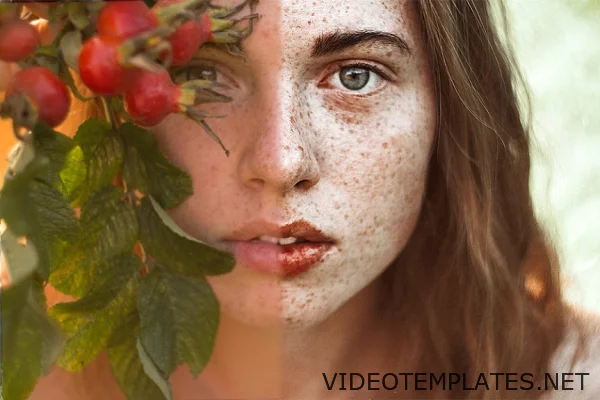Trends in 3D Graphics in 2024: From Virtual Reality to AI Tools
Category:
Blog

The world of 3D graphics is continuously evolving, and 2024 is shaping up to be a transformative year for the industry. The rapid development of new technologies, combined with the increasing demand for realism and interactivity, has given rise to several key trends that are reshaping how 3D content is created and consumed. From the growth of virtual and augmented reality to the powerful integration of artificial intelligence, these innovations are driving a creative revolution. Let’s explore the main trends in 3D graphics that will define the future of this field.
The Rise of Virtual and Augmented Reality
Virtual Reality (VR) and Augmented Reality (AR) are no longer niche technologies reserved for a select few industries. They have become mainstream, touching a broad range of applications from gaming and architecture to education and healthcare. In 2024, VR and AR will play an even more significant role in 3D graphics, as more creators leverage these tools to build immersive worlds and interactive experiences.
The success of VR and AR depends largely on the quality and realism of 3D models. Whether it's a lifelike character in a VR game or an accurate 3D representation of a building in AR, the need for highly detailed and well-textured models is paramount. With advances in real-time rendering, we are moving closer to photorealistic VR experiences that blur the line between the virtual and the real world.
One of the biggest challenges in VR and AR development has always been achieving high visual quality while maintaining performance. In 2024, we will see more efficient optimization techniques, allowing for more complex and detailed 3D environments without sacrificing the fluidity of real-time interaction.
Artificial Intelligence: Revolutionizing 3D Content Creation
Artificial intelligence (AI) is perhaps the most exciting development in 3D graphics this year. The capabilities of AI tools in generating textures, models, and even animations are astonishing. Imagine being able to create an entire 3D scene simply by describing it in text—AI can now make that a reality.
AI tools are becoming a powerful asset in the hands of 3D artists and developers. For example, AI-driven texture generation can dramatically reduce the time spent on repetitive tasks such as creating different material variations. Machine learning algorithms can also generate high-quality textures and materials that seamlessly blend into complex environments. The speed and efficiency of these tools allow artists to focus on the creative aspects of their projects rather than the technical ones.
In 2024, AI will go even further, with algorithms capable of automating more sophisticated tasks. From rigging characters to simulating realistic physics in real time, AI will become an essential partner for creators. As these technologies continue to evolve, 3D artists will be able to produce high-quality content faster and with less manual effort.
Free download 3D-models for Blender, 3ds Max
Procedural Generation: The Future of Content Creation
Procedural generation is another critical trend shaping the future of 3D graphics. This technique allows developers to create complex scenes, objects, and textures using algorithms rather than manually modeling each element. In 2024, procedural content generation will become more advanced, especially in industries like game development and architecture.
The ability to generate entire landscapes, cities, or even universes using procedural tools saves an enormous amount of time and effort. Game developers are already using procedural techniques to create vast open worlds that players can explore, and this trend will only grow. By defining a set of rules, developers can generate endless variations of environments, making each experience unique.
Beyond gaming, procedural generation is transforming architectural visualization and interior design. Instead of designing every object in a room manually, architects can rely on algorithms to generate furniture, decorations, and even textures. This not only speeds up the design process but also allows for more creative flexibility.
The Importance of PBR Textures
Physically Based Rendering (PBR) remains a cornerstone of realistic 3D graphics. In 2024, the demand for high-quality PBR textures will continue to grow as creators strive to achieve ever greater levels of realism. PBR ensures that materials interact with light in a physically accurate way, making objects appear as they would in the real world.
One of the key areas where PBR excels is in gaming, where visual realism has become a major selling point. From the reflections on a shiny surface to the way light scatters across a rough material, PBR brings a level of immersion that was previously impossible. But PBR is not limited to games. Architects, product designers, and filmmakers all use PBR to enhance the quality of their 3D renders.
Free download PBR textures
The process of creating PBR textures has also become more streamlined with the introduction of specialized software like Substance Painter and Quixel Mixer. These tools allow artists to create detailed textures with ease, while ensuring they behave correctly under various lighting conditions.
Real-Time Rendering: Pushing the Boundaries of Visual Quality
Real-time rendering has revolutionized the 3D industry over the past few years, and in 2024, it will continue to push the boundaries of what is visually possible. With the advent of powerful game engines like Unreal Engine 5 and Unity, real-time rendering is no longer limited to games; it is now being used for film production, architectural visualization, and even virtual events.
Real-time rendering allows for immediate feedback, meaning artists and developers can see their changes instantly, without waiting hours for a final render. This has made the production process much more efficient and has opened the door to more experimentation and iteration.
One of the most exciting applications of real-time rendering in 2024 is the creation of virtual production environments for film and TV. Using large LED walls and real-time rendering software, filmmakers can create realistic sets without leaving the studio. This not only reduces production costs but also gives directors more creative control over their environments.
The Shift Toward Cross-Platform Development
In 2024, cross-platform development will become an even more essential aspect of 3D graphics. Developers are no longer creating content for a single platform or device; instead, they must consider how their work will perform across multiple systems, from high-end gaming PCs to mobile devices and VR headsets.
This shift toward cross-platform compatibility requires more efficient workflows, where assets are optimized for different hardware configurations without sacrificing visual quality. With the rise of cloud computing and streaming services, 3D models and environments will need to be adaptable to varying levels of performance. This means that 3D artists will increasingly rely on techniques like LOD (Level of Detail) and asset streaming to ensure smooth performance across platforms.
The Evolution of 3D Scanning Technology
Another trend that continues to gain momentum in 2024 is 3D scanning technology. Scanning real-world objects and environments to create digital models is becoming more accessible and widespread. Photogrammetry and laser scanning techniques are used to capture the finest details of a subject, from the texture of the skin to the intricacies of natural terrain.
3D scanning is being used in a variety of fields, from game development to cultural preservation. Museums and historical sites are now using 3D scanning to create digital replicas of artifacts and locations, allowing them to be explored virtually by anyone around the world. This technology is also helping to bring more realism to games and films, where scanned objects can be seamlessly integrated into 3D environments.
Cloud-Based Workflows and Collaboration
Cloud computing is playing a larger role in 3D graphics as workflows become more collaborative and decentralized. In 2024, cloud-based tools will be more widely adopted, allowing teams from around the globe to work together in real time. Whether it's artists creating assets, developers building environments, or animators refining movements, cloud-based platforms are making it easier to collaborate across distances.
One of the major advantages of cloud-based workflows is the ability to share large files without the need for cumbersome downloads. Assets can be stored and rendered in the cloud, allowing multiple users to access them simultaneously. This not only speeds up the production process but also ensures that everyone is working with the latest version of a file.

Conclusion
The trends in 3D graphics for 2024 are set to revolutionize the industry, making it easier for artists and developers to create, collaborate, and experiment. From the increasing use of AI tools and procedural generation to the growing importance of real-time rendering and PBR textures, the future of 3D graphics looks brighter than ever. Whether you're working on a game, an architectural project, or a film, staying ahead of these trends will give you the tools and insights needed to create stunning, immersive experiences that push the boundaries of what is possible in 3D.
```
Add




